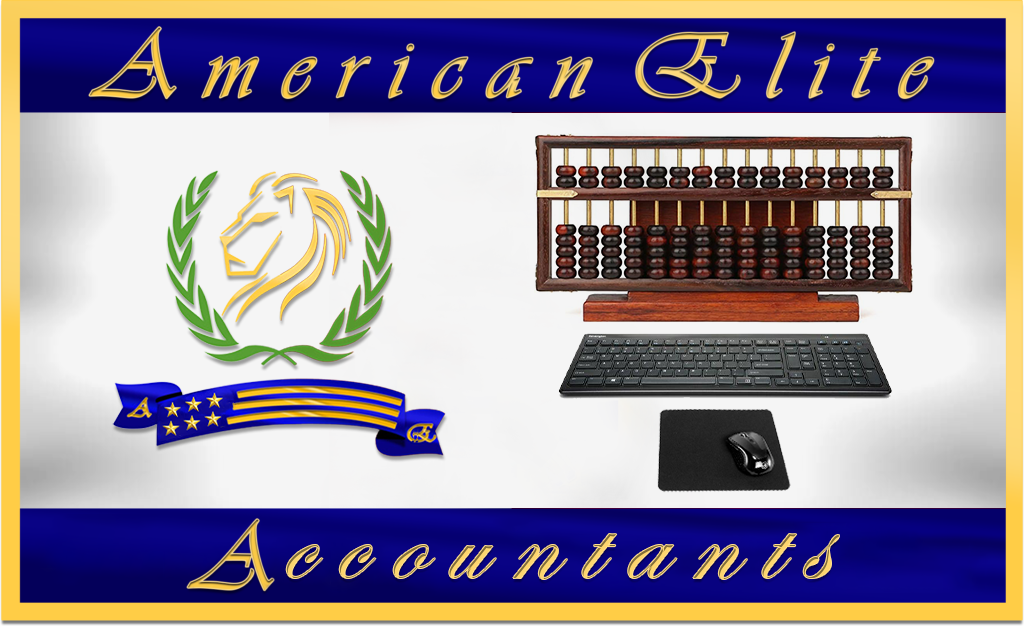Daniel Davidson, MD, MBA, DBA, PHD
Introduction:
Businesses must get ready for tax season by organizing their financial records in order to provide a seamless and effective working relationship with their accountants. A thorough preparation can guarantee tax law compliance, cut down on stress, and minimize errors. Here’s how to prepare your company’s financial paperwork for your accountant, step-by-step:
Gather Necessary Documents:
Getting the required documentation together is an essential first step in getting your corporation financial paperwork ready for your accountant before tax season. These records serve as the basis for your tax return and aid in guaranteeing accuracy and adherence to tax regulations. These are the important documents you need to obtain:
Income Statements:
Often referred to as profit and loss statements, these documents display the revenue, costs, and net income for your business over a given time frame, typically a year. Your accountant can calculate your taxable income with the aid of income statements.
Balance sheets:
Usually produced at the conclusion of the tax year, balance sheets give an overview of your company’s financial situation. They include a list of the equity, liabilities, and assets of your business, all of which are necessary to determine your tax liability.
Cash Flow Statements:
These documents detail the inflow and outflow of funds for your company during the fiscal year. They aid in the reconciliation of your financial statements by your accountant and offer insights into the liquidity of your business.
Bank Statements:
To confirm revenue, expenses, and transactions, you must have bank statements for each of your business accounts. They support the accurate recording of all financial transactions in your financial statements.
Keep track of all business spending, including purchases, payments, and investments, by keeping receipts and invoices. These records attest to your deductible costs and assist your accountant in properly reporting them.
Depreciation schedules:
Provide depreciation schedules if your business has any fixed assets, such as buildings or equipment, that are subject to depreciation. The depreciation expense for each item, which is subtracted from your taxable income, is specified in these schedules.
Loan Records:
Obtain loan records, such as loan agreements, repayment plans, and interest statements, if your business has taken out loans. These records are required in order to compute the interest expenses that are deductible.
Tax Forms:
Submit any tax forms that your company needs, such as Form W-2 for workers or Form 1099 for independent contractors. These documents, which are necessary for tax law compliance, detail income paid to certain individuals.
Review and Reconcile Financial Statements:
Examining Financial Statements:
This entails making sure the cash flow, balance sheet, and income statement appropriately depict the company’s financial situation and performance. Accountants and other financial experts search for mistakes, irregularities, and odd patterns that might need more examination throughout the review process. They also look for any notable differences or changes by contrasting the current and prior periods’ financial accounts.
Financial Statement Reconciliation:
This process compares various financial documents or accounts to make sure they are accurate and consistent. Reconciliation of bank statements, for instance, entails matching up the company’s transaction records with the bank’s data. In order to guarantee the correctness of the financial statements, any disparities or errors discovered throughout the reconciliation process are looked into and fixed.
Organize Supporting Documents:
Getting your supporting documentation organized is crucial to getting your corporation financial records ready for your accountant before tax season. This stage entails classifying and organizing invoices, receipts, and other documentation supporting your business expenditures. The following are some tips for efficiently arranging your supporting documents:
Organize Expenses:
Sort your invoices and receipts into groups according to the type of spending. Typical categories consist of:
Office equipment
Payments for rent or leasing
utilities (such as water and electricity)
Tourism and amusement
Expert services (such as legal and accounting)
acquisitions of inventory
Employ a Filing System:
Whether it’s digital folders on your computer or physical folders, use a filing system that suits you. For ease of reference, label each folder with the cost category and tax year.
Arrange by Date:
Sort your invoices and receipts by date inside each category. This guarantees that you have a comprehensive record for the tax year and facilitates tracking spending over time.
Include Required Information:
Ensure that every invoice or receipt has the required details, including the date of the transaction, the sum, the name of the vendor, and a brief summary of the outlay.
Digitize Documents:
To clear up clutter and make management easier, think about digitalizing your invoices and receipts. To scan and keep digital copies of your papers, use a smartphone app or a scanner.
Back Up Your Files:
To avoid data loss, make sure to periodically backup your files, regardless of whether you decide to use a digital or physical filing system.
Check for Completeness:
Before giving your accountant your paperwork, go over it to make sure you have all the invoices and receipts you need for the tax year. Make a note to follow up and get the missing documentation if anything is missing.
Prepare Additional Information:
The process of compiling and arranging supplemental documentation to back up your business’s tax returns and financial statements is referred to as “Prepare Additional Information.” This data is essential for giving a thorough picture of your company’s operations and financial situation. The following are some essential elements of gathering more data:
Explanation of Depreciation:
The cost of a tangible asset is spread out over the course of its useful life in detail by depreciation schedules.
They are crucial for computing depreciation expense, which lowers your company’s taxable income.
Loan Records:
Loan agreements and repayment plans for any business loans your company has taken out are included in the loan documentation.
In order to appropriately report interest expenses and loan repayments in your financial statements, several documents are required.
Tax Returns:
Depending on your business’s operations, you might need to file certain tax forms, including Form W-2 for workers or Form 1099 for independent contractors.
These forms are necessary to ensure that tax laws are followed and to report income paid to certain individuals.
Records of Fixed Assets:
The purchase, depreciation, and disposal of your company’s fixed assets—such as buildings, machinery, and equipment—are all documented in fixed asset records.
These documents are needed to compute depreciation expense and figure out how much your fixed assets are worth on your balance sheet.
Lease Contracts:
Included should be lease agreements for any real estate or equipment that your business has leased.
These agreements aid in the computation of leasing costs and the assessment of how lease obligations affect your cash flow.
Inventory Documents:
Your Company’s inventory records tell you how much, how much it costs, and what kind of inventory it has.
For the purpose of figuring out the cost of goods sold and the inventory value on your balance sheet, these records are crucial.
Policies for Insurance:
Included should be insurance coverage covering the activities, liabilities, and assets of the business.
These policies aid in understanding the coverage that is available to your company and in calculating insurance costs.
Communicate with Your Accountant:
Effective communication between you and your accountant is essential to a seamless tax preparation process. When providing an explanation of the current state of your financial paperwork, keep the following points in mind:
Arrange an appointment:
To go over your financial paperwork, schedule an appointment with your accountant. This enables you to discuss the specifics and resolve any queries or worries face-to-face.
Give precise instructions:
Express your preferences and expectations about the preparation of your taxes in a clear and concise manner. For instance, make sure your accountant is aware of any specific credits or deductions you wish to claim.
Contribute Relevant Information:
Send your accountant all pertinent bank statements, income statements, balance sheets, cash flow statements, receipts, and invoices, among other financial records.
Explain Any Changes:
Be careful to let your accountant know about any major changes that occurred in your business or financial status during the tax year, such as new investments, acquisitions, or ownership changes.
Ask Questions:
If you have any questions regarding any part of your tax preparation, don’t be afraid to contact your accountant. Your accountant’s role is to assist you in making sense of your tax situation and helping you make decisions.
Talk About Future Planning:
Take this chance to talk about tax planning techniques for the following year. Your accountant can offer insightful guidance on how to optimize your financial well-being and reduce your tax obligations.
Give Feedback:
After your taxes are prepared, let your accountant know what you thought of the procedure. This can assist make future tax preparations better and guarantee that your needs are successfully satisfied.
Conclusion:
For a seamless and effective tax filing procedure, get your company’s financial documentation ready for your accountant well in advance of tax season. You may make sure your accountant has all they need to correctly complete your taxes by assembling all required paperwork, going over and comparing financial records, arranging supporting documents, and compiling extra information. Scheduling a meeting well in advance to go over your financial papers and any special requirements you may have is essential for good communication with your accountant. Finally, make plans for the upcoming year by putting procedures in place and maintaining organization all year long. By following these guidelines, you can simplify the tax preparation process and obtain important knowledge about the performance and financial health of your business.








